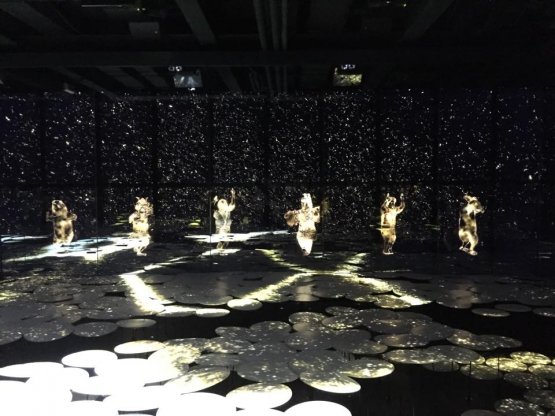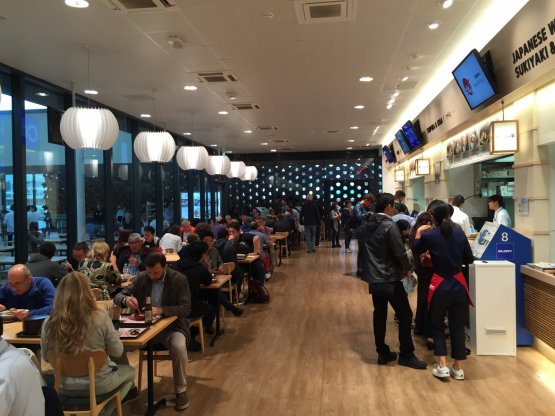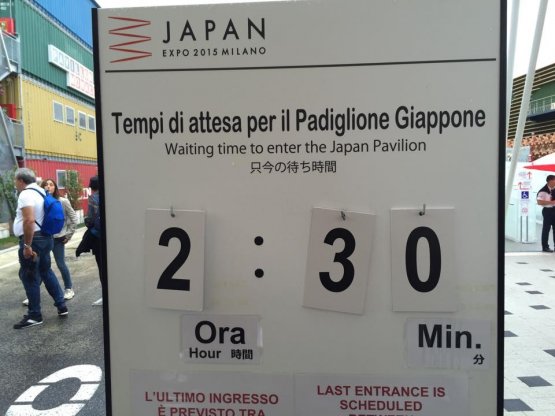We all have in mind the panel with the discomforting countdown queuing visitors have to face: 2 and a half hours in the best cases, 6 in the worst. The question is: is it worth it? In our opinion, the answer can only be yes. Because the Japanese pavilion, the most yearned for in the entire World Fair, is not just Minokichi the restaurant with limited seats, the one with the special kaiseki menu (9 courses) for 220 euros that was much debated. There’s much more. It’s the usual question of pointing a finger at the moon. Let’s rather focus on the earth’s satellite.
Architect Atsushi Kitagawara – Japan Art Academy Prize 2010, a sort of Nobel of the arts in Japan – conceived a maxi-container with two floors mostly made with wood, a material that was not chosen by chance as it is a symbol of the «supreme renewable resource», held together thanks to compressive tension, a rather clever and complex junction system.

During the first half of the visit you can see spectacular representations of the protagonists and rhythms of nature and seasons
The pavilion’s basic concept is to illustrate the journey of food from the fields to the table. And the main part happens on the spectacular ground floor of the exhibition area, divided into various rooms. The first floor, instead, is dedicated to a large event area and two restaurants: the above mentioned
Minokichi, inaccessible unless you booked long in advance, and a much more accessible and affordable restaurant for which you don’t need to queue.
The different rooms into which the ground floor is divided are inspired by nature’s wisdom and artisanal tradition, two pillars in the millennial food culture of the country, a “harmonious diversity” that sums up the devotion for nature and its rhythms but also the importance of listening to the people involved in the food chain. Visitors thus walk through poetic hi-tech rooms gradually reproducing scenes of environmental decay and regeneration, light and shadow, life and death, towards stone paved corridors, typical of Japanese gardens, a symbol of hospitality.

You can reach the Japanese restaurant on the first floor without any queue: in the menu, excellent tempura and soba, sushi, curry or steaks going from 10 to 30 euros
Accompanied by the reproduction of seasonal sounds and scents, aromas from the four season, you then reach a display that sums up the traditional knowledge and techniques of fermentation and drying, a dashboard on food illustrating a large quantity of ingredients based on the finished products. One could spend hours observing what you can do with rice, umami, fermentation. Fish, seafood, vegetables.
Yet this is not possible as you walk fast given that others are waiting behind you and urge to enter. And because the following room is the most important of all: it invites us to reflect on global-scale issues – such as agricultural standardization, unfair distribution of resources and wrong diet – and the solutions suggested by Japan to solve these. For instance, the institution of agricultural, fishery and forestry cooperatives to support farmers’ families, a diet based on soy to save the world from the crisis of edible resources, the study of earth microorganisms to regenerate arid soil and advanced preservation techniques to reduce waste.

It is hard, during these last days of Expo to wait for a shorter time than this. Should this be the case, take advantage of it
And again: the genome of rice, a type of cultivation developed to adapt to climate changes. Precision agriculture, artificial photosynthesis, agricultural development projects in Africa and Asia and urban agriculture to guarantee food safety. A wealth of inspiration to be discussed not so much at the "Restaurant of the future" (a fun theatre show, specially created for children) or at
Minokichi (by the way, there’s not just the 220 euros menu but also the one for 80 euros including 7 courses) but at the simple Japanese restaurant, a lively place with many kitchen islands (tempura and soba, sushi, curry house or steak house) where you can spend from 10 to 30 euros. To have a meal and leave in every direction, richer than before.